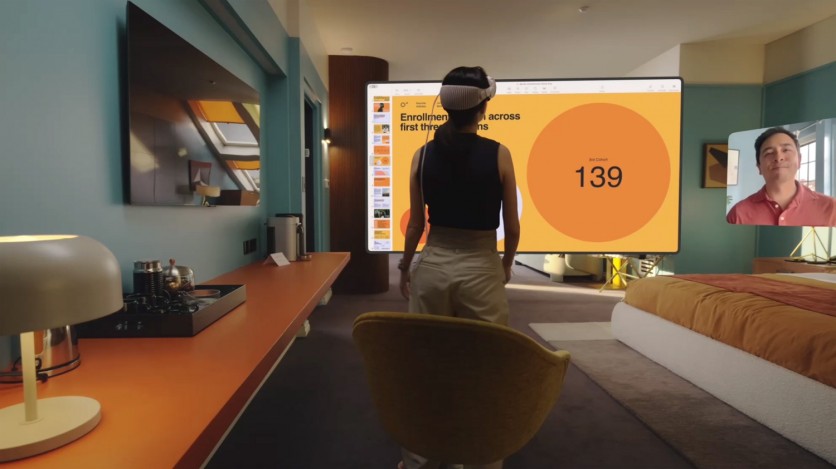Upon its debut, Apple's upcoming Vision Pro is set to face criticism for the absence of essential apps, reigniting tensions with specific developers. Additionally, more insights surface regarding the device's launch day experience.

CUPERTINO, CALIFORNIA Apple today unveiled Apple Vision Pro, a revolutionary spatial computer that seamlessly blends digital content with the physical world, while allowing users to stay present and connected to others.
Not Including First Party Apps
While it might not come as a major surprise that a significant portion of the "over 1 million" apps touted for the Vision Pro by Apple could be existing iPad or iPhone versions, what raises eyebrows is the inclusion of some prominent first-party apps.
The Verge reported that additionally, Apple's Podcasts, News, Calendar, and Reminders will also be part of this category.
At first glance, this choice seems somewhat peculiar for Apple's highly anticipated new platform. The efficacy of the Vision Pro's gaze-and-tap interface in adapting to these touch-centric apps will likely determine whether it becomes a real issue.
Admittedly, apps like Reminders may not require mind-blowing immersive 3D effects, but for those who see the Vision Pro as a potential productivity device, the seamless integration of main input methods with apps like Calendar becomes crucial.
A less-than-optimal experience with essential apps could potentially dampen the allure of the $3,500 device for some users. This underscores a prevailing narrative of subdued excitement surrounding Vision Pro's app ecosystem.
Developer interest appears lackluster, influenced by factors such as Apple's 30 percent App Store commission, a significant drawback, particularly for a product that may have an initial launch volume as modest as 80,000 units, resulting in a limited user base for app sales.
Furthermore, Bloomberg reported that independent developers, unable to access a Vision Pro developer kit, may be reluctant to invest in the high cost of entry, a sentiment echoed by app maker Paul Haddad in a Mastodon post.
Opting Out of the App Lineup
Prominent corporations are also opting out of the Vision Pro app lineup. Initially, both YouTube and Netflix won't offer native apps for the headset, and they've chosen not to allow their iPad apps to run on it either.
Instead, users can access their platforms through Safari, which may suffice, given that both websites support 4K playback via Apple's browser, at least on the Mac.
Perhaps the absence of specific apps on the Vision Pro won't be a significant drawback, unless, of course, you're particularly thrilled about the prospect of watching Star Wars in the middle of a desert.
It's crucial not to jump to conclusions about the Vision Pro's viability as a product without understanding how users will utilize it. The precedent set by the Apple Watch and Apple TV, neither celebrated for having a robust app ecosystem, suggests that user satisfaction can prevail nonetheless.
Similar to these devices, the headset represents a distinct platform from the iPad and iPhone. Nevertheless, the apparent lack of enthusiasm from developers raises concerns. Ultimately, for the Vision Pro to thrive, it will require more than just a handful of impressive 3D movie apps.

ⓒ 2025 TECHTIMES.com All rights reserved. Do not reproduce without permission.


![Best Gaming Mouse For Gamers With Smaller Hands [2025]](https://d.techtimes.com/en/full/461466/best-gaming-mouse-gamers-smaller-hands-2025.png?w=184&h=103&f=6fd057ef777bd39251d4e7e82e9b23f1)

